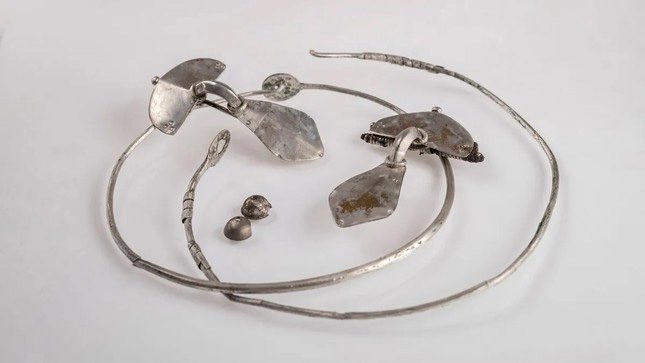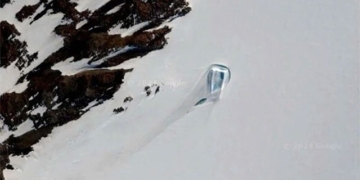Archaeologists in Poland have discovered a vast Gothic cemetery filled with silver jewelry dating back to the 4th century.

Silver jewelry, including necklaces and brooches, excavated along the Wda River in Poland. (Photo: Wdecki Landscape Park)
Olaf Popkiewicz, a content creator focusing on archaeology on YouTube, discovered the jewelry – two silver necklaces, two silver brooches, and beads that once belonged to a third necklace – while walking along the Wda River. He alerted a team of archaeologists excavating this site, located in the protected Wda Landscape Park in northern-central Poland.
The park’s representative wrote in a Facebook post: “In three weeks, we have uncovered over 250 m2 of the cemetery and found 50 Gothic-style graves.” The archaeologists discovered a rich collection of burial goods, including ceramics, brooches, amber beads, and numerous pieces of jewelry adorned with snake motifs buried with the deceased.

Archaeologists in Poland have uncovered a large Gothic cemetery.
The excavation area may represent part of an ancient burial site that researchers believe could be larger than 1 hectare.
The Goths were a Germanic tribe that, according to some accounts, migrated from Scandinavia and settled across Europe in the 1st century AD. The Goths are famously known for sacking Rome in 410 AD and later dividing into two kingdoms: the Visigoths, which thrived in Iberia and southwestern Gaul (modern-day France), and the Ostrogoths, who dominated Italy. However, these kingdoms existed for a relatively short time, and the Goths ultimately fell to the Moors in 711 AD.
The Gothic tribes inhabited northern Poland from the 1st to the 5th centuries during their southward migration from Scandinavia to the Roman Empire. More than 2,000 Gothic graves have previously been excavated near the village of Wielbark, revealing early Gothic culture that extended from the southern coast of the Baltic Sea to what is now western Ukraine.
The newly excavated site shows both inhumations and cremations in graves with urns. When researchers analyzed the urns found near Wielbark in 2019, they discovered that some were specifically crafted for cremation.
According to Magdalena Natuniewicz-Sekuła, a researcher at the Institute of Archaeology and Ethnology of the Polish Academy of Sciences in Warsaw, the Goths living in present-day Poland during the Roman period were talented jewelers.
In 2020, archaeologists uncovered a Gothic-style burial site in the village of Weklice, also in northern Poland, which preserved hundreds of high-quality silver jewelry pieces, with craftsmanship that even surpassed that of contemporary jewelry. The quality of the jewelry (including bracelets, fasteners, and decorative items) is comparable to that of the Roman Empire.


















































